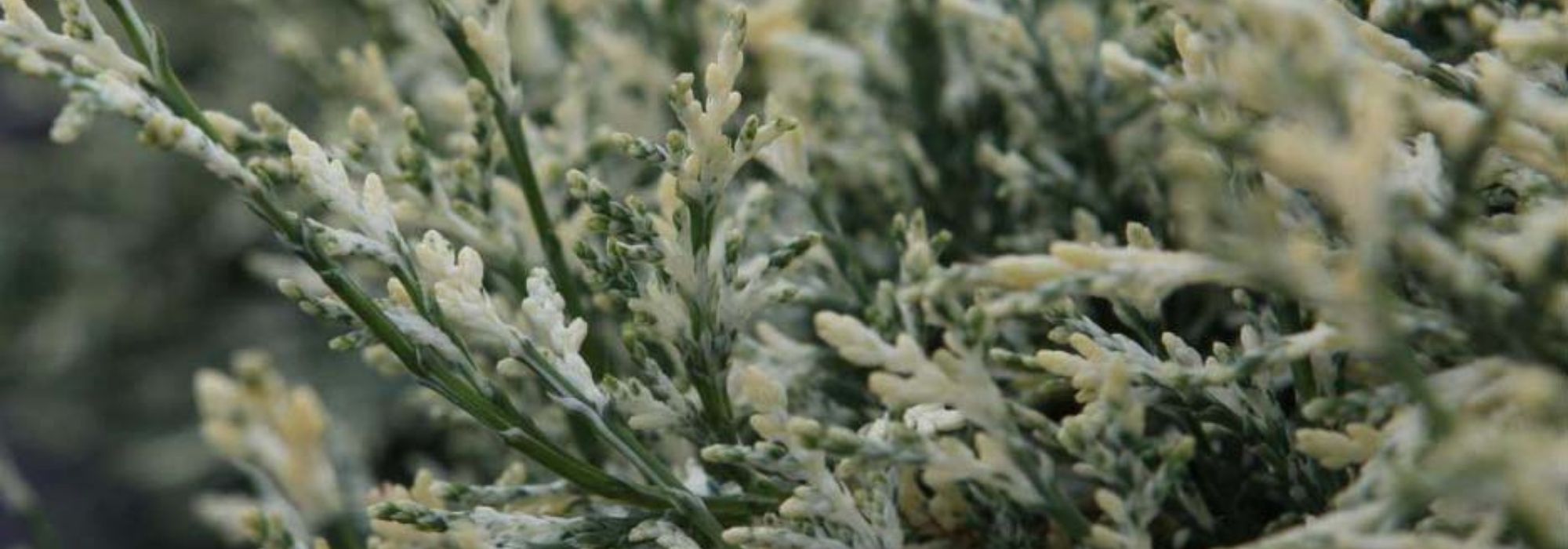
8 colourful conifers in striking, luminous colours
our selection to add personality to your garden
Contents
Inherently decorative, colourful conifers work wonders in gardens, and come in a wide variety of shapes and textures to suit every style. Generally evergreen, their foliage is compound, either of needles, such as pines, spruces or cedars, or of scales such as cypresses or junipers.
In our “full of colour” selection, these plants offer beautiful variations of tones – often changing through the seasons: blue, silvery, golden, coppery, soft green conifers… Among the 61 varieties of colourful conifers available in our online shop, we have selected 8 that are particularly striking and luminous.
→ Discover our range of colourful conifers
Globose blue of Chamaecyparis lawsoniana 'Minima ‘Glauca’
Also called ‘Lawson cypress’, false-cypress Chamaecyparis lawsoniana ‘Minima ‘Glauca’ is a dwarf conifer variety that does not exceed 1 metre at ripeness, with a 1-metre spread. Its evergreen foliage of flattened X-shaped scales turns bluish green, sometimes grey. Not to forget reddish inflorescences for males and violet for females.
Offering a globose and compact habit, Chamaecyparis ‘Minima ‘Glauca’ is planted in soil as rich as it is deep, but above all well-drained because it dislikes stagnant moisture in winter. Ideally planted in a semi-shaded spot, sheltered from overly dry conditions and from winds. It requires generous watering in the growing season during first years and a specialised conifer fertiliser in April.
Its bluish colours are beautifully showcased beside silver-leaved plants, fescues and rock carnations in a rockery or small garden.
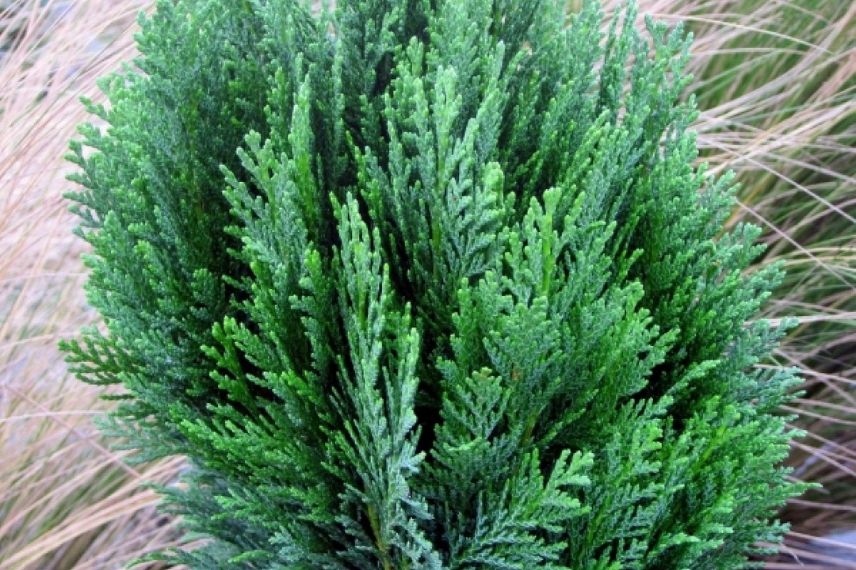
Luminous pearlescence of conifer Chamaecyparis lawsoniana 'Pearly Swirls'
Chamaecyparis lawsoniana ‘Pearly Swirls’, this other variety of Lawson cypress, bears young pearly, shimmering shoots giving its foliage silvery highlights. Quickly offering a globose, dense habit, it reaches no more than 1.75 metres in height and 1.50 metres in spread at ripeness. Its numerous branches are covered with pearly cream-white scale leaves when they emerge in spring, then turn greenish blue-grey with grey reflections.
Plant in spring or autumn in light, humus-rich, humus-bearing or sandy soil. This conifer requires regular watering during first months after planting, ideally in full sun. A ball of light that beautifully decorates a rockery alongside pale yellow Helianthemum, a border or a container through seasons.
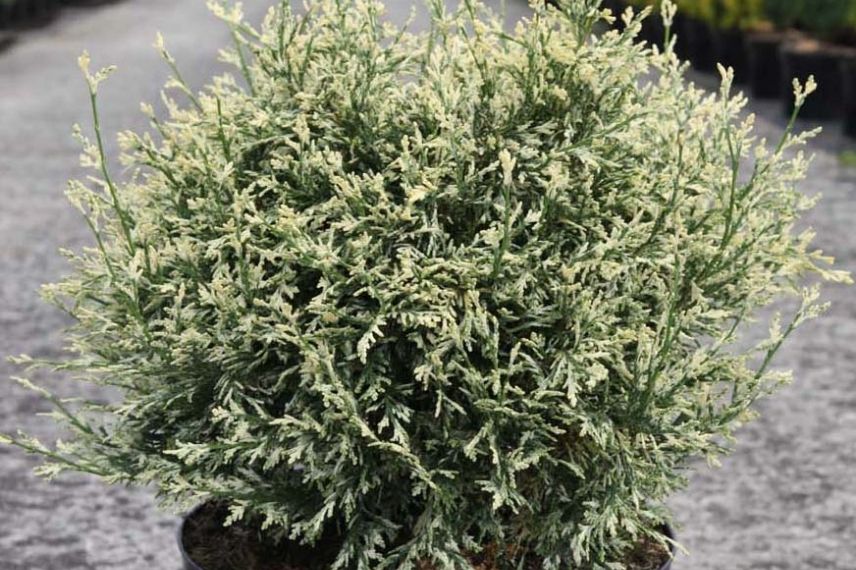
Discover other Colourful Conifers
View all →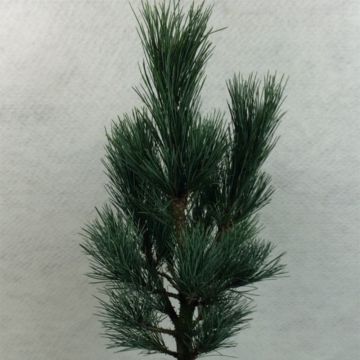
Available in 1 sizes
Available in 1 sizes
Available in 1 sizes
Available in 2 sizes
Available in 1 sizes
Available in 1 sizes
Available in 1 sizes
Available in 2 sizes
Available in 1 sizes
Available in 1 sizes
Lemon-yellow of Chamaecyparis obtusa 'Kamarachiba'
Also called « Japanese hinoki cypress », Chamaecyparis obtusa ‘Kamarachiba’ bears lemon-yellow foliage, particularly luminous, which turns coppery bronze in winter. Its flattened branchlets droop gracefully, forming an ovate, slightly flared habit. A conifer, with a somewhat shaggy appearance, that remains colourful all year round, livening up small spaces, borders and rockeries.
Simply ensure it is planted in well-drained, fertile soil, and apply a conifer-specific fertiliser each year to perfect its cultivation.
Easy to grow, its colours come alive in sun or partial shade, sheltered from wind, alongside Corsican hellebores and ornamental dogwoods.
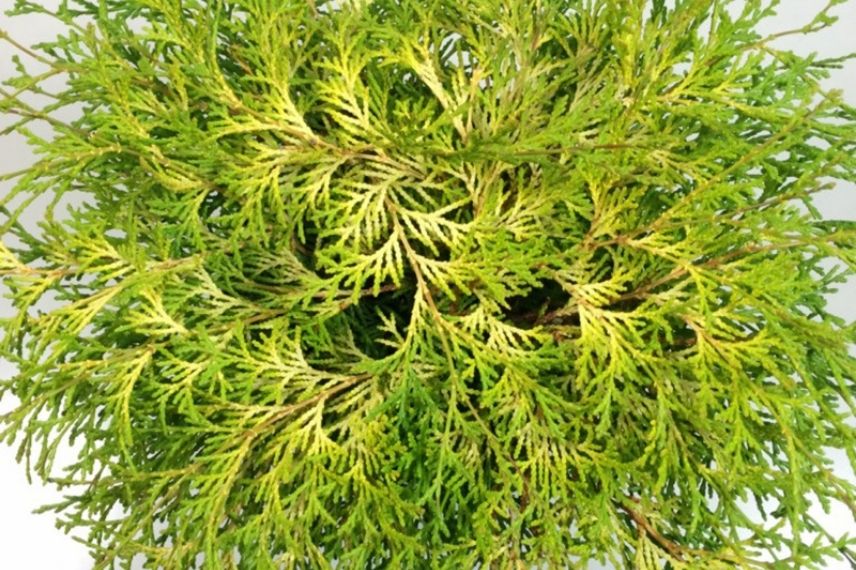
Fleecy silvery light-blue hue of Picea pungens 'Glauca ‘Globosa’
Forming a broad, rounded, irregular cone, Picea pungens ‘Glauca Globosa’ forms a mounded mass with young shoots of a beautiful pale blue in spring, later turning to a more silvery shade ensuite. For the rest of the year it ranges between water-green and silver-blue, set against a purplish-grey bark.
In well-drained soil, even calcareous and fairly fertile, in full sun, water generously during the first summers after planting. However, take care not to rot its roots by overloading it with water. Afterwards, it tolerates dry periods well.
This blue conifer, with exceptional foliage, is well showcased on a tapetum of Sedum ‘Angelina’, with heathers or near winged Euonymus.
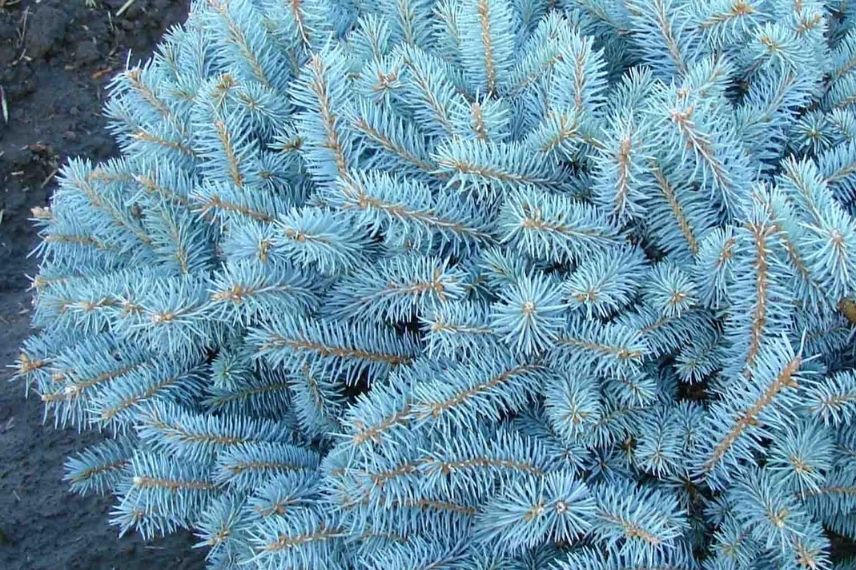
Fluffy golden yellow of Metasequoia glyptostroboides ‘Gold Rush’
Also called « dawn redwood » or « Chinese sequoia », Metasequoia glyptostroboides ‘Gold Rush’ is a deciduous conifer! Indeed, it produces pale yellow foliage in spring, turning yellow-green in summer, before taking on a beautiful rust hue in autumn prior to falling. All accentuated by its trunk, ribbed at the base, and covered with cracked reddish-brown bark.
This colourful conifer grows in deep, loose, fairly fertile soil in a sunny position. As it must never lack water, water generously during its first years and in periods of drought, and consider applying a special conifer fertiliser every two years if soil is poor.
It is perfect beside a clump of sacred bamboo (Nandina Domestica ‘Filamentosa’) or a twisted Japanese larch (Larix Kaempferi ‘Diana’).
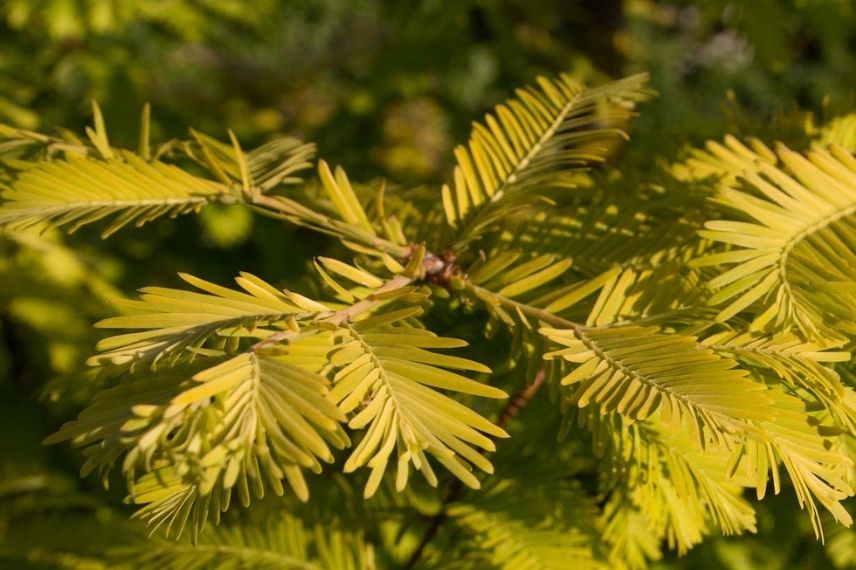
Orange shades of the colour-changing Thuja occidentalis ‘Golden Tuffet’
Also called « Canadian arborvitae », Thuja occidentalis ‘Golden Tuffet’ is a groundcover conifer, offering an aromatic evergreen when crushed, and also colour-changing, yellow in summer and shifting from orange to bronze in winter. Its imbricate leaves, diamond-shaped, give twigs a flattened appearance for an elegant whole, wider (1.50 metres at ripeness) than tall (70 cm at ripeness).
An excellent groundcover, it is planted in ordinary, loose soil. It requires good sun or a semi-shaded spot in a warm climate.
It pairs as well with large stones as with grasses or dwarf conifers, with a habit either prostrate (such as Juniperus horizontalis ‘Blue Chip’) or globose (such as Picea abies ‘Little Gem’).
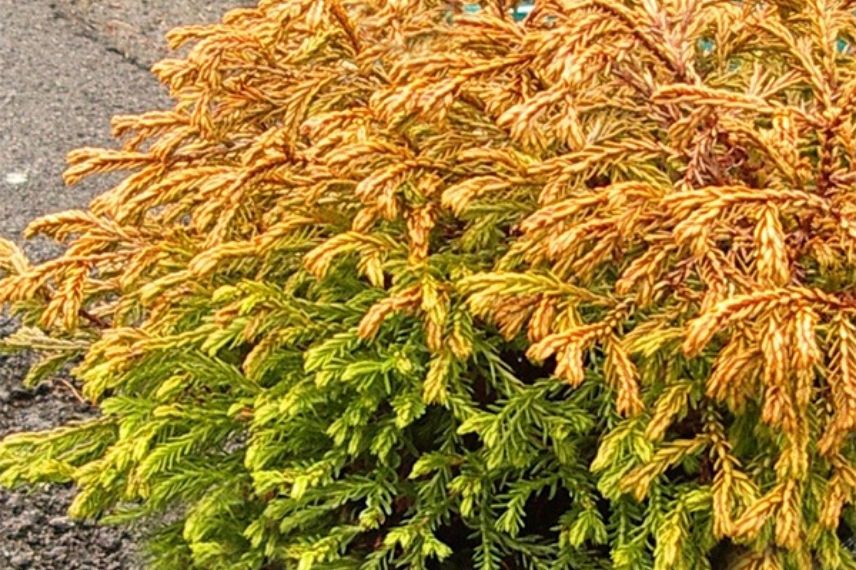
Golden hue of Pinus mugo ‘Golden Glow’ with its plum-coloured ament
Also called « mountain pine », Pinus mugo ‘Golden Glow’ displays extremely luminous golden evergreen foliage, notably in autumn and spring : emerging from light brown buds, its young shoots are golden yellow before turning bright, clear green for the rest of the year. Finally, its aments stand out clearly, in this colourful foliage, with their plum colour.
At ripeness, this mountain pine variety reaches 1.50 m in height with an 80 cm spread. This conifer is planted on fresh, well-drained soil, in sun – whether in a small garden, planted singly or in a rockery. Note that it can also be used in a large pot, placed on a terrace or balcony.
It pairs well with Chinese silver grass (Miscanthus Sinensis ‘Graziella’ or Miscanthus Sinensis ‘Malepartus’) with magnificent pinkish or bright red spikes, or with Mahonia ‘Apollo’ with its lovely scented flowering in late winter.
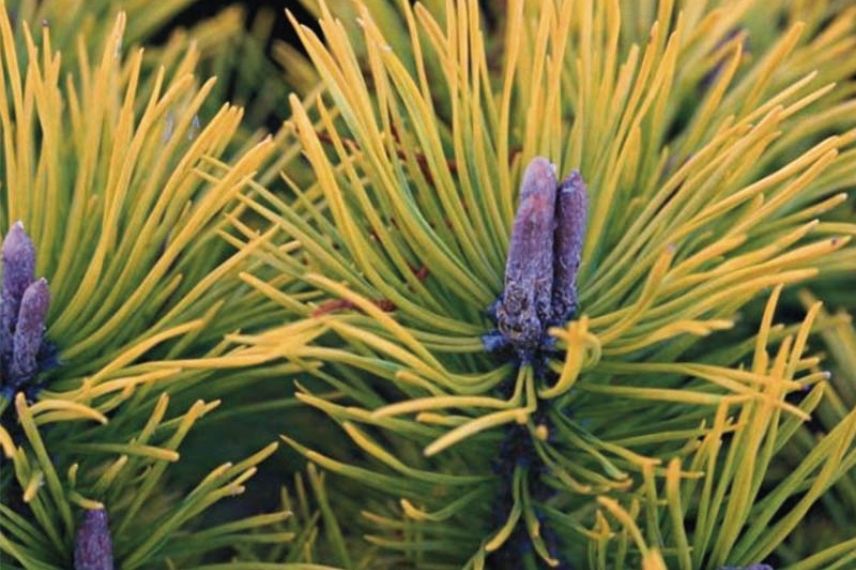
Bicoloured Pinus parviflora 'Fukai'
Also called ‘Japanese white pine’, Pinus parviflora ‘Fukai’ is absolutely magnificent in winter, with its golden needles. When well exposed to the sun, the colour of its young shoots will not fail to be noticed, with their blue-green ringed with golden bands. Its habit, both rounded and bushy, can reach 1 metre in all directions, but at ripeness can rise to 2.40 m and 1.80 m wide.
When planted in ordinary, well-drained soil, even calcareous and very poor, it requires generous watering during its first two years after planting or in case of prolonged drought. While this conifer is not afraid of winds, it dislikes waterlogged soils in winter and heatwave in summer. Therefore, plant it rather in partial shade in warm climate to prevent its foliage being scorched by the sun’s blazing rays.
When associated with classic or wild Camellias, it may require annual pruning to control its development and shape it to the desired form over the years.
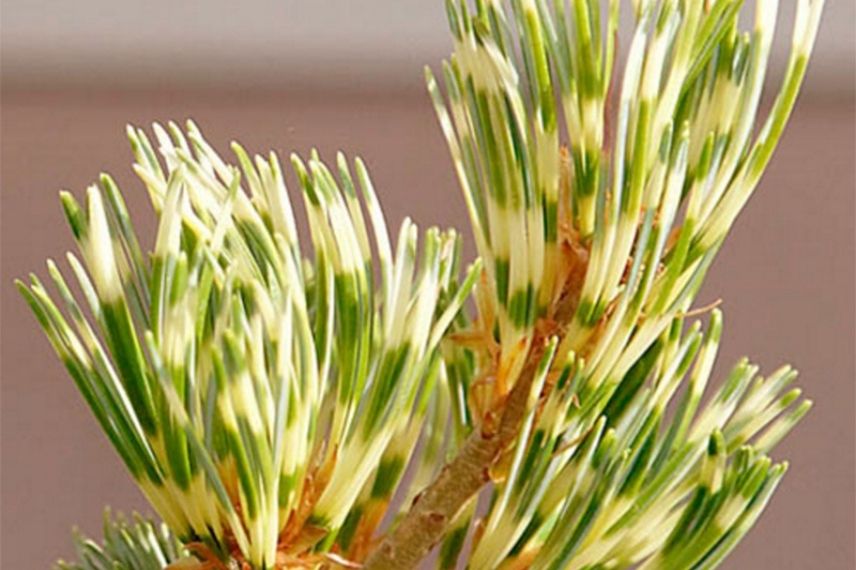
- Subscribe!
- Contents
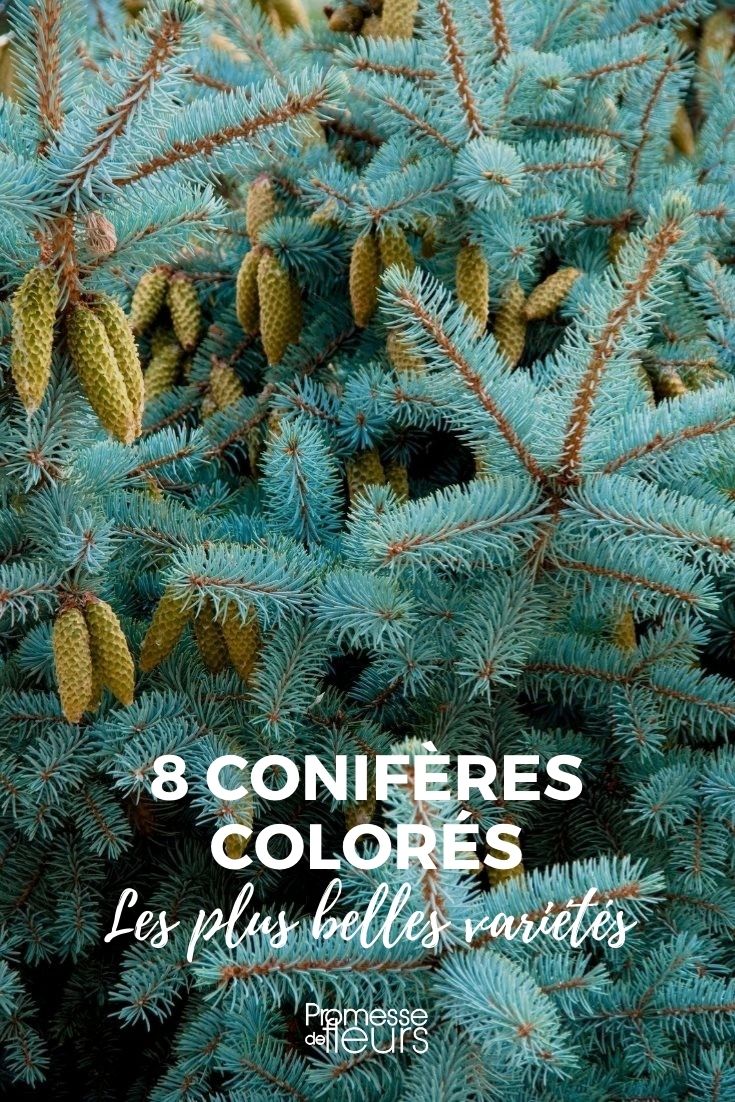































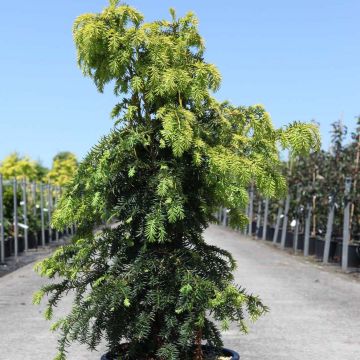

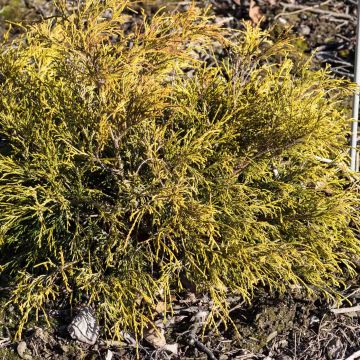
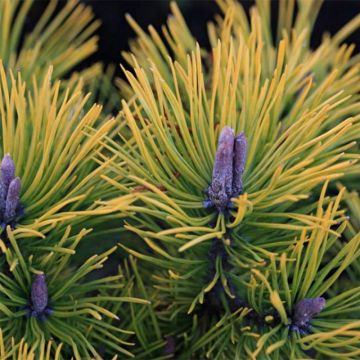
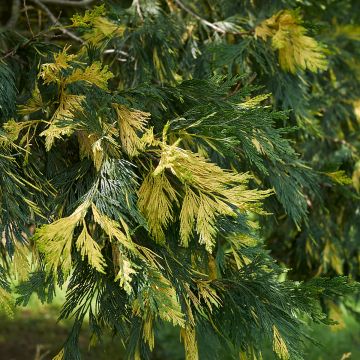
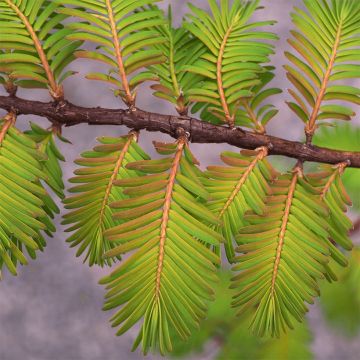
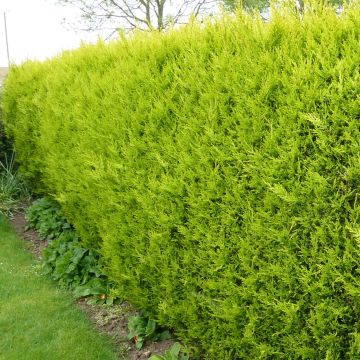

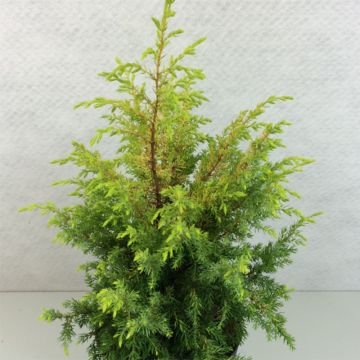
Comments